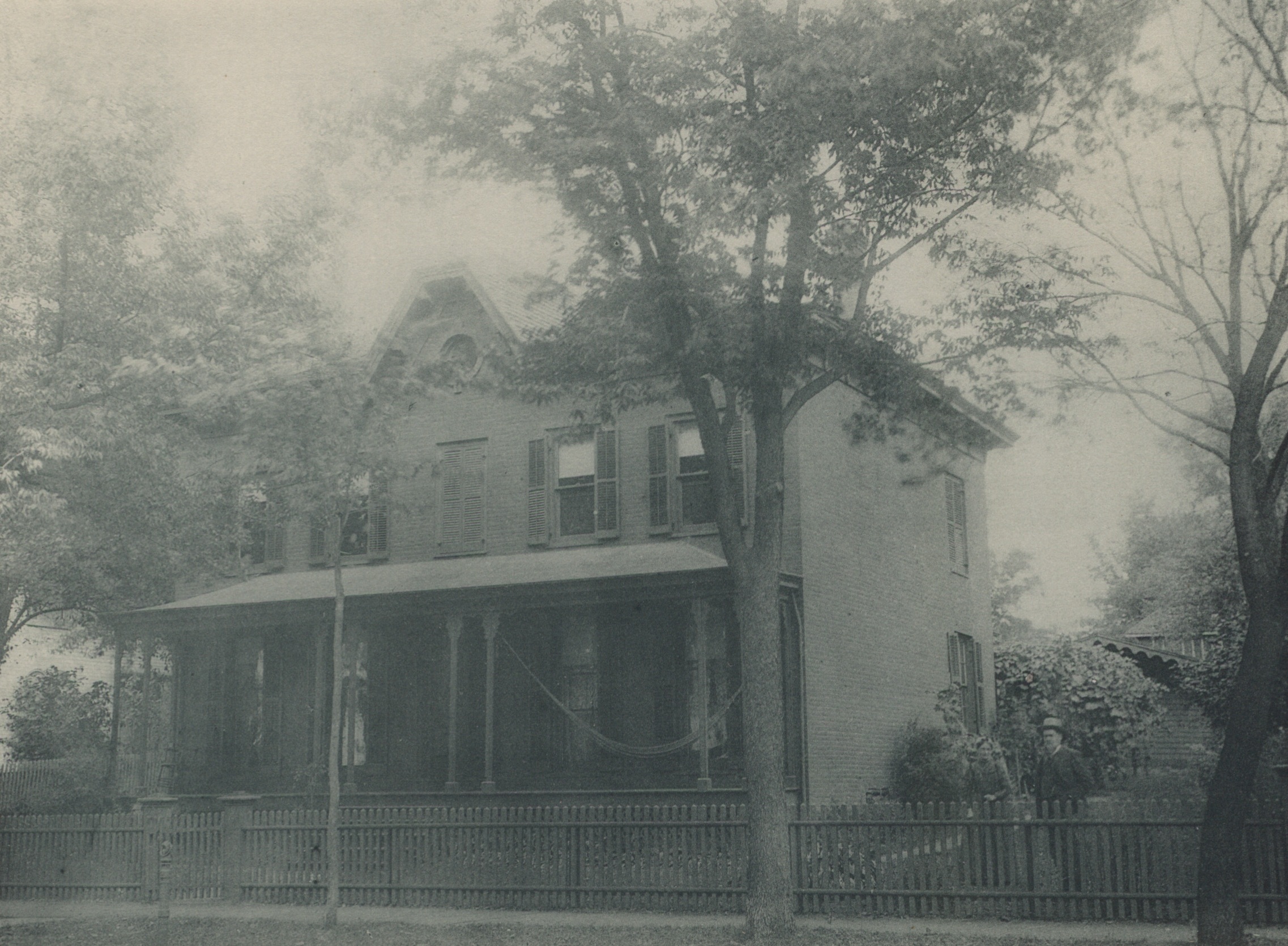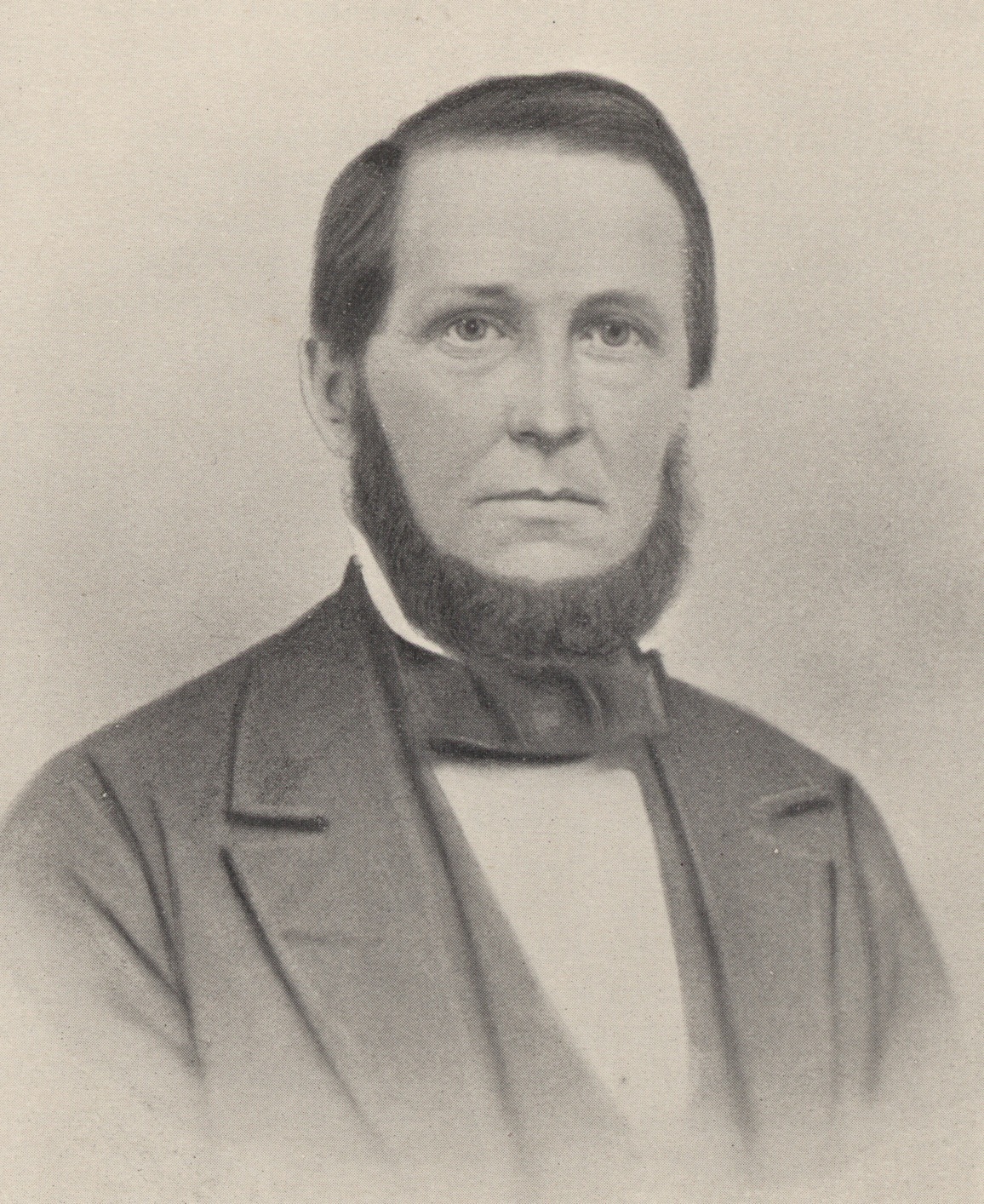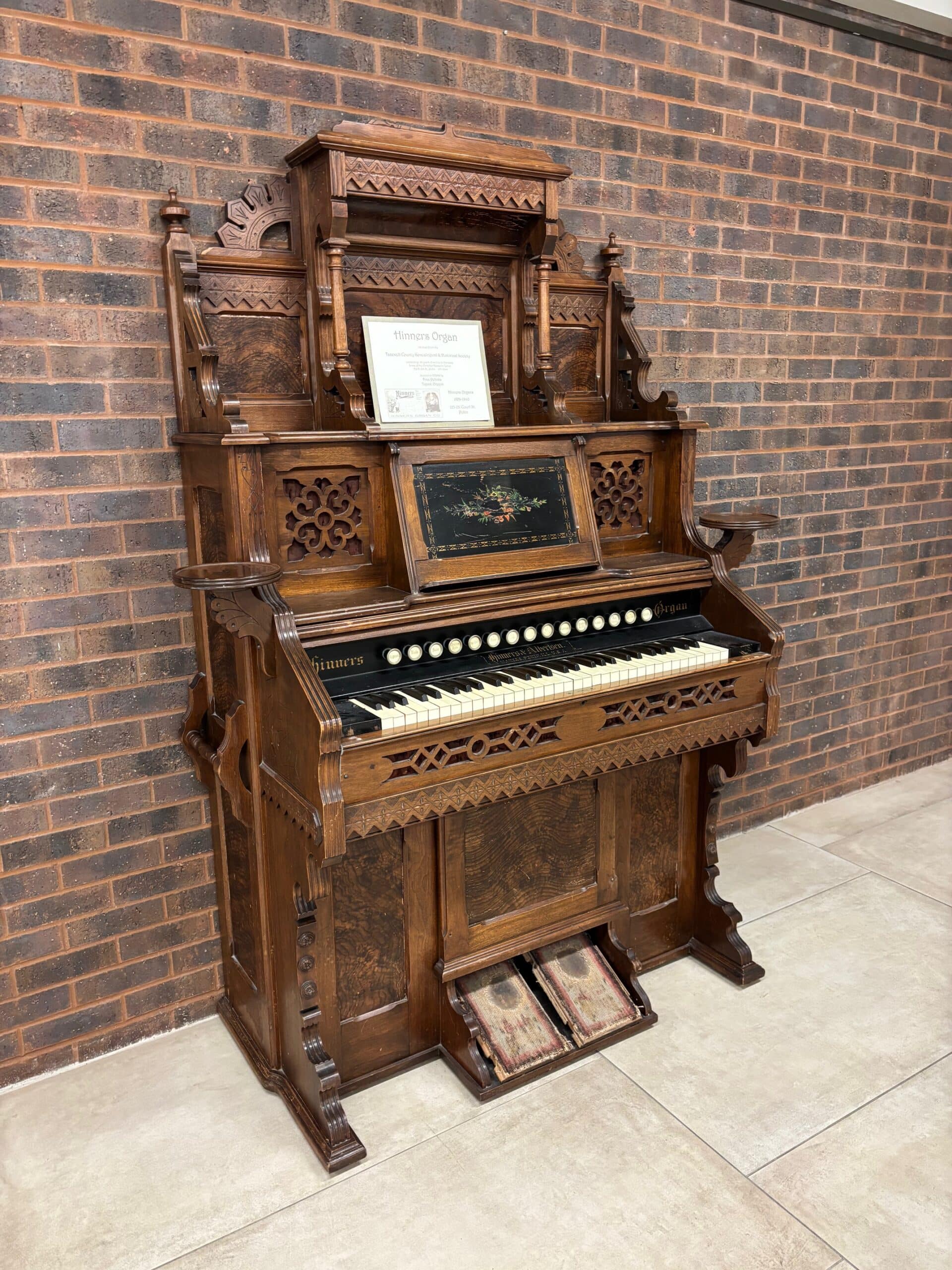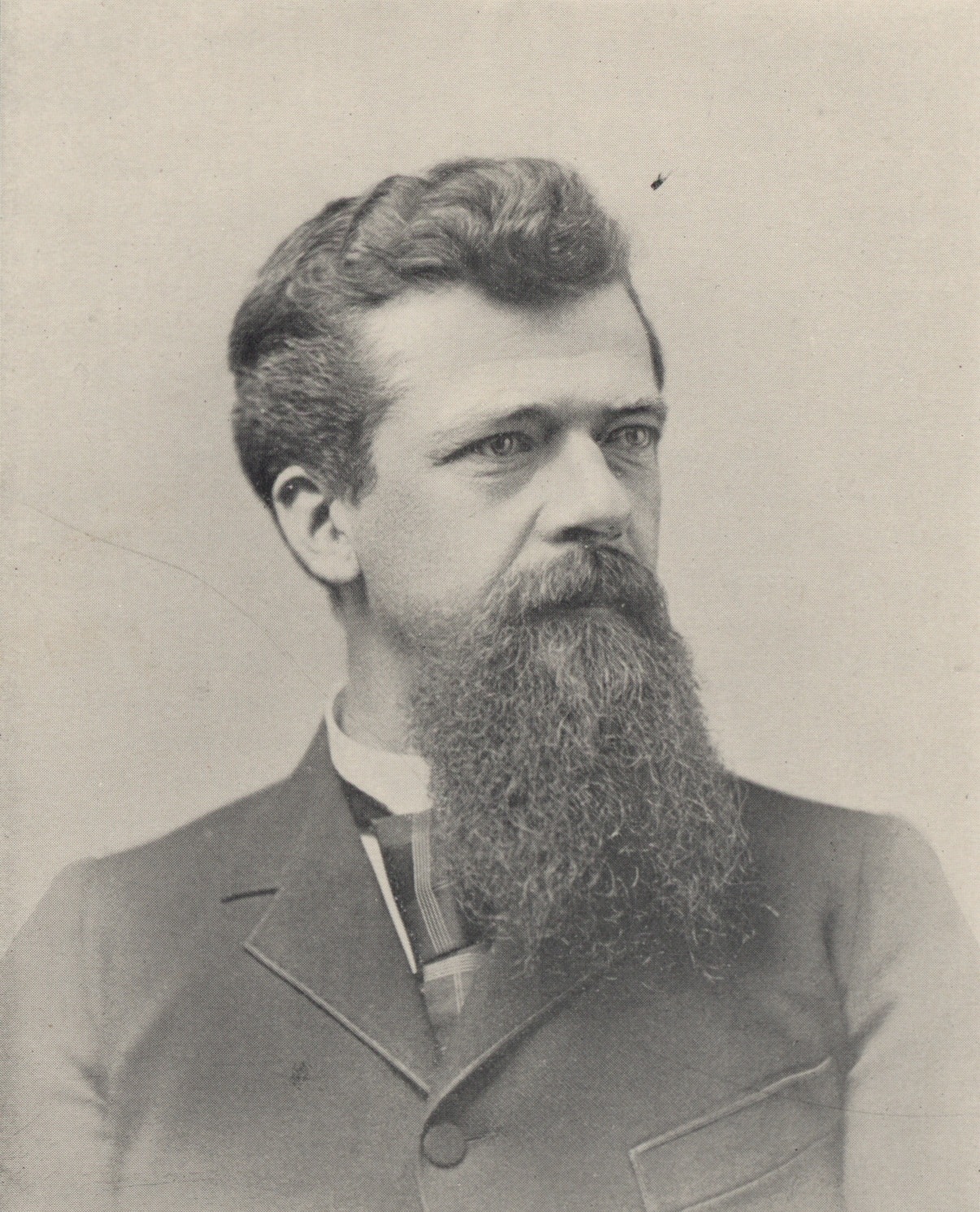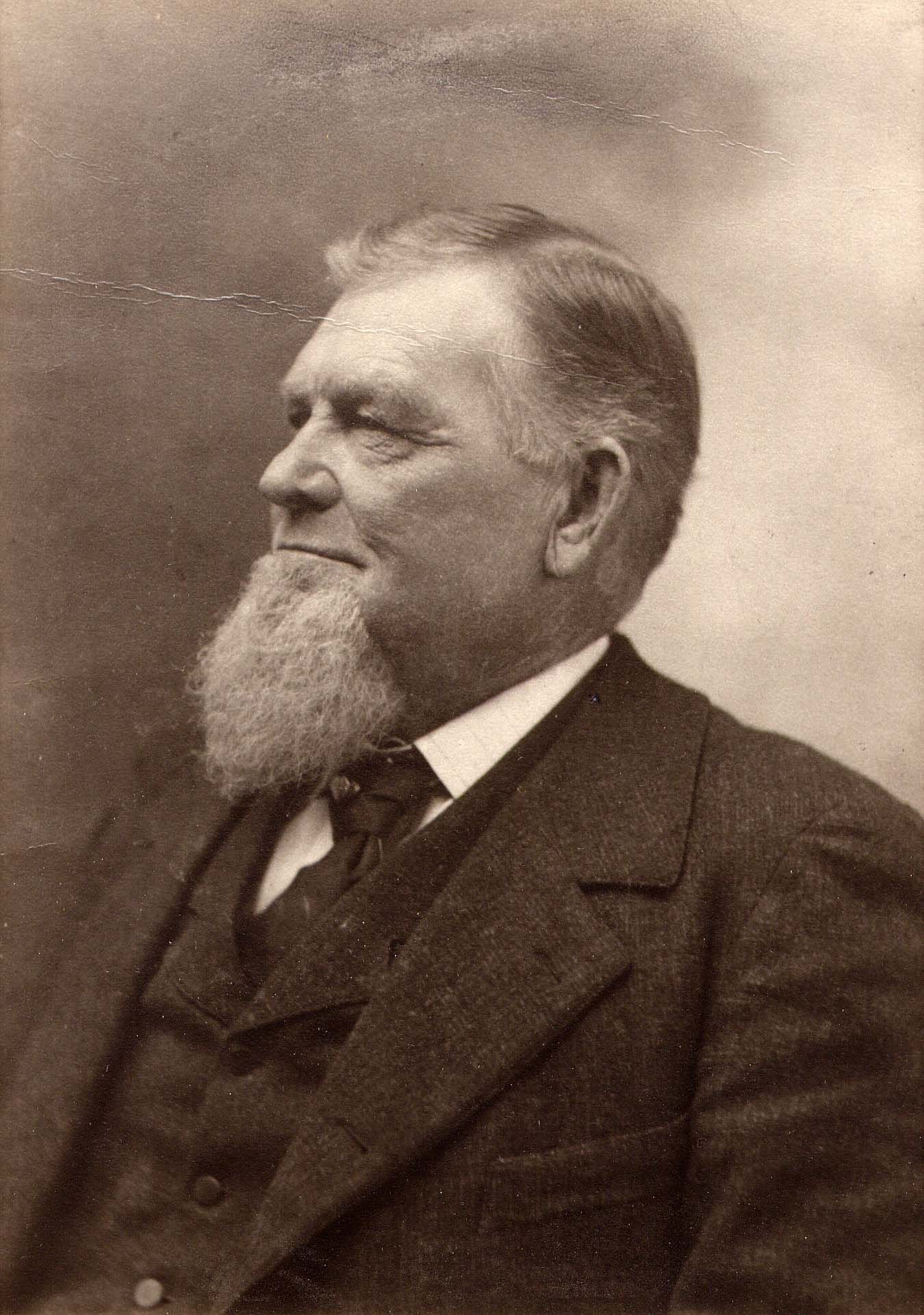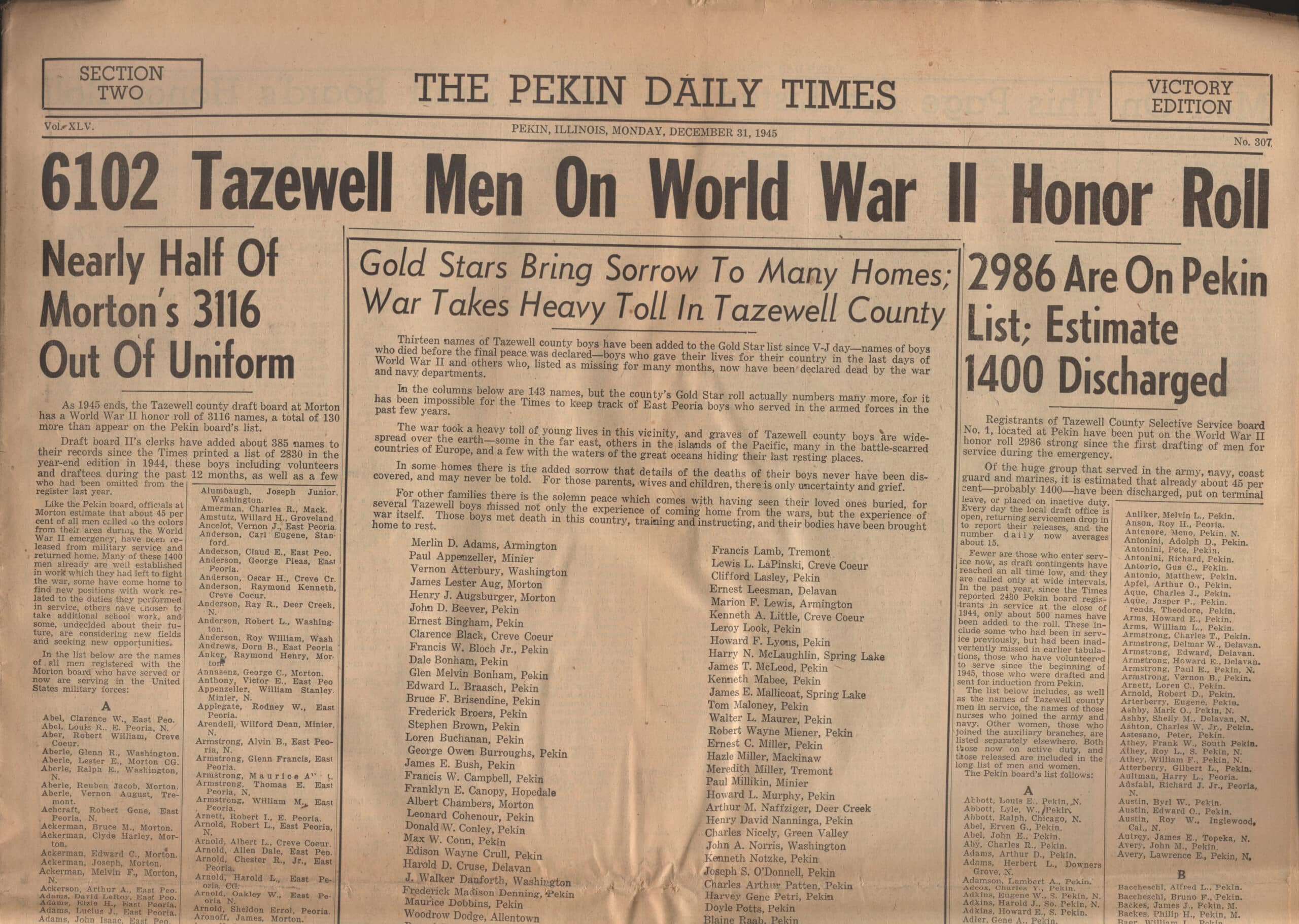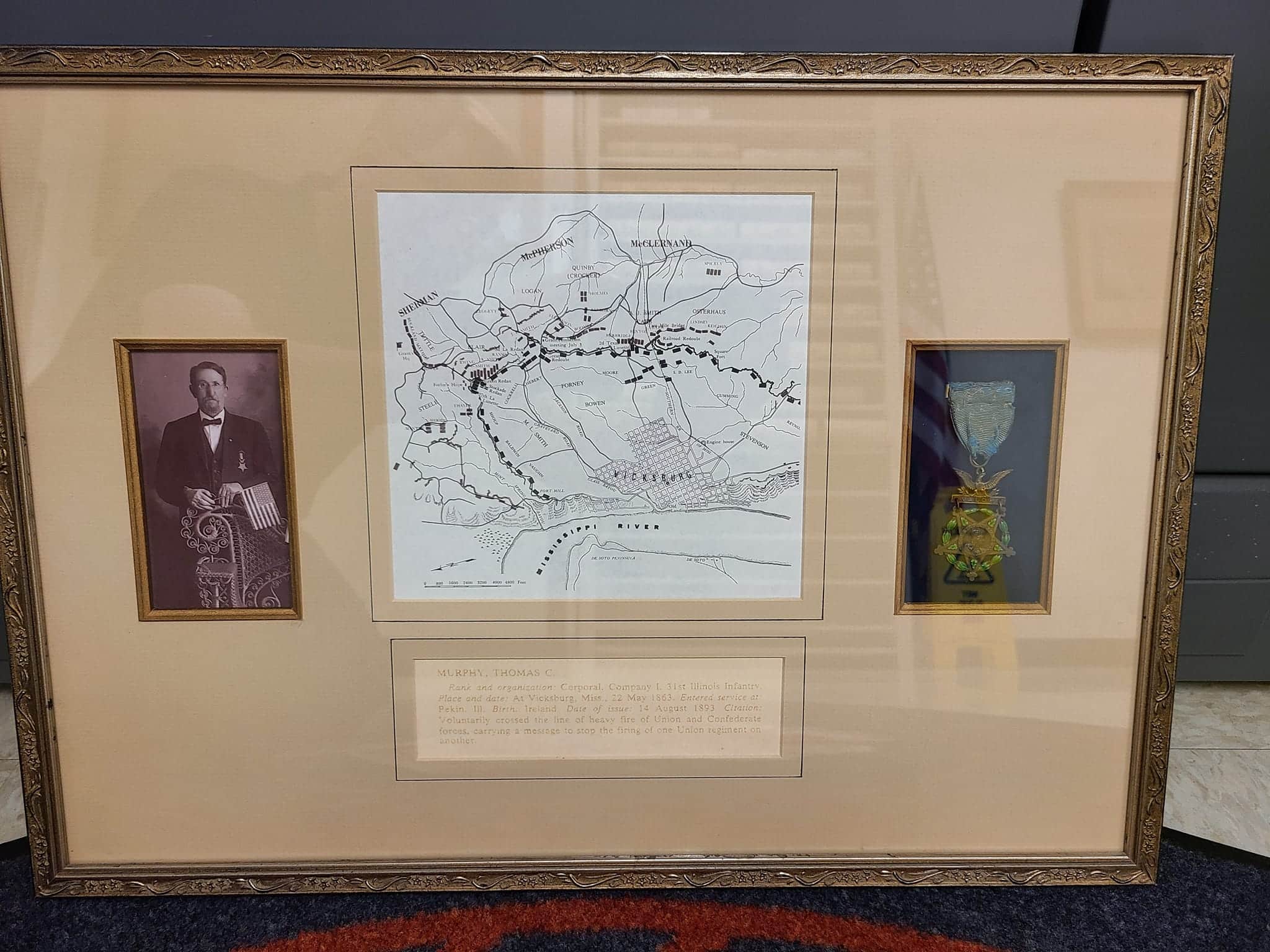Last Thursday, Oct. 23, the City of East Peoria unveiled a new Illinois State Historical Society marker that commemorates a World War I U.S. Army training operation that took place in East Peoria at an installation known as Camp Herring. The new marker, sponsored by the City of East Peoria, the East Peoria Chamber of Commerce, the East Peoria Historical Society, and the Illinois State Historical Society, is to be placed near the former site of the Army camp.
Camp Herring was located near the current Caterpillar KK factory along Edmund Street, and it was an active Army post from 1917 to 1919. On 23 Oct. 1917, seven officers of the U.S. Army’s Ordnance Department under the command of Capt. Harry Telemach Herring (1880-1945) came quietly and unannounced to the Village of East Peoria to meet with Holt Manufacturing Co.’s vice president Murray Morrison Baker (1872-1964). Holt in East Peoria was more properly known as the Holt Caterpillar Company, manufacturer of tractors.


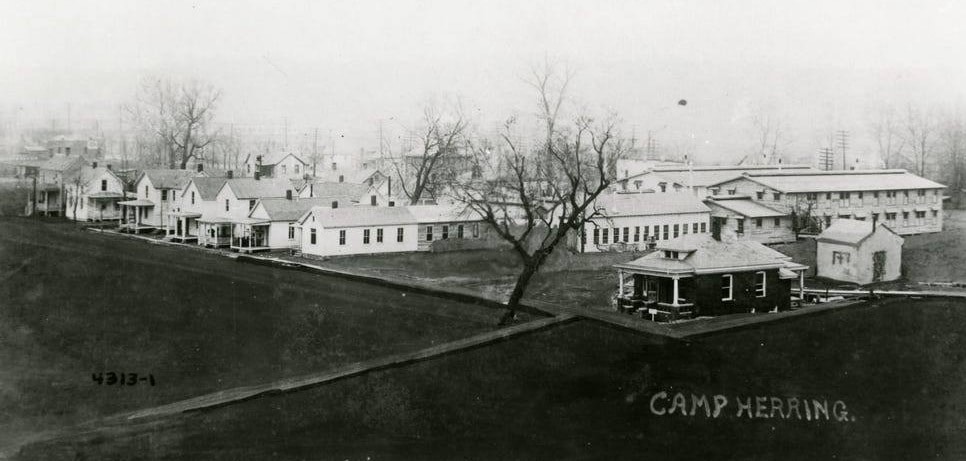

Apart from those officers and two Holt Manufacturing officials, the meeting’s purpose was known only to the highest officialdom in Washington D.C. The meeting’s outcome was the establishment of the headquarters of the Ordnance Motor Section Instruction Schools on Edmund Street. The post was dubbed Camp Herring after the commander, Capt. Herring, who was promoted to the rank of Major upon his appointment to head the camp, and later in 1918 to the rank of Lieutenant Colonel.
The mission of Camp Herring’s instruction schools was to assist an important aspect of the mechanization of the U.S. armed forces in Europe. To move the military’s heavy artillery quickly on the battlefields, Holt Manufacturing sold their tractors to the Army, whose mechanics would train at Camp Herring to learn the proper maintenance of Holt Caterpillar tractors.
Camp Herring was the headquarters for six regional Army mechanic schools, two of them in Illinois, three in Wisconsin, and one in New Jersey. Each of the schools included Ordnance Schools of Instruction for Field Service, Mobile Ordnance Repair Shops, and Motorized Regiments. The regional schools were location at: 1) East Peoria, with Holt Manufacturing, 2) Kenosha, Wisconsin, with the Nash Motor Co., 3) Clintonville, Wisconsin, with the Four Wheel Drive Auto Co., 4) Racine, Wisconsin, with the Four Wheel Drive Auto Co., 5) Rock Island Arsenal in Rock Island, Illinois, and 6) Raritan Arsenal in Edison, New Jersey. By the time of the Armistice on 11 Nov. 1918, Lieut. Col. Herring’s unit consisted of 300 officers and 2,500 enlisted men.
The camp in East Peoria came to the attention of the general public on 7 March 1918, when the U.S. Department of Justice in conjunction with the Army shut down all East Peoria saloons that were located within half mile of Camp Herring — six saloons — leaving only three remaining in East Peoria. This decision resulted in an uproar among East Peoria’s manufacturing workers.

Following is a complete transcript of the Pekin Daily Times article about the saloon closings, from page four of the 8 March 1918 issue:
SIX EAST PEORIA SALOONS CLOSED
U. S. DISTRICT ATTORNEY TAKES SUMMARY ACTION YESTERDAY.
ONLY THREE NOW SURVIVE
Saloons Forced Out of Business Were Within a Half Mile of Military Post–Camp Herring
District Attorney E. C. Knotts, of Springfield, paid an unexpected visit to Peoria yesterday, and the immediate result of his visit was the suspension of Assistant District Attorney John E. Dougherty and Deputy United States Marshal Walter Williams, and the closing up of six saloons at East Peoria.
Dougherty and Williams were suspended for thirty days pending an investigation of charges of laxity in dealing with vice in the Rock Island district. The attorney general is quoted as saying: “The deplorable conditions found to exist at Rock Island have been caused largely by the neglect of the municipal authorities to preserve order and decency, and this has imposed an added responsibility upon federal officials in that jurisdiction.” Both Dougherty and Williams declared they welcome an investigation.
Suspension of the two federal district officials is considered an indication of the determination of the department of justice to enforce strictly anti-liquor and vice regulations about army and navy camps.
The six saloons closed at East Peoria were in the heart of the business district, and were owned by Anderson & Lee, Edward C. Ansbaugh, Albert S. Guffy, John Hoffman, Wm. Petrie and John Wilson. Only three saloons are left in the village. One is owned by George M. Dean, and is so close to the half mile dry zone established by the federal authorities that special investigator Capron has not yet determined whether it is inside or outside. The other two survivors are the saloons owned by William Slagle and Isaac McKinzie. Both are on East Washington street outside the business district. The order to close was not unexpected as the saloonmen had anticipated the action some days ago. A military post known as Camp Herring has been established at the Holt factory at East Peoria, and it is on account of its presence that the saloons were forced to close. The government regulation forbids operations of saloons within a half mile of the military zone.
On Armistice Day, with the announcement of the cessation of fighting in Europe, the soldiers of Camp Herring joined all the employees of Holt Manufacturing and marched 3,000 strong en masse in parade into and through the streets of Peoria. The following year, the Army quietly closed Camp Herring.



